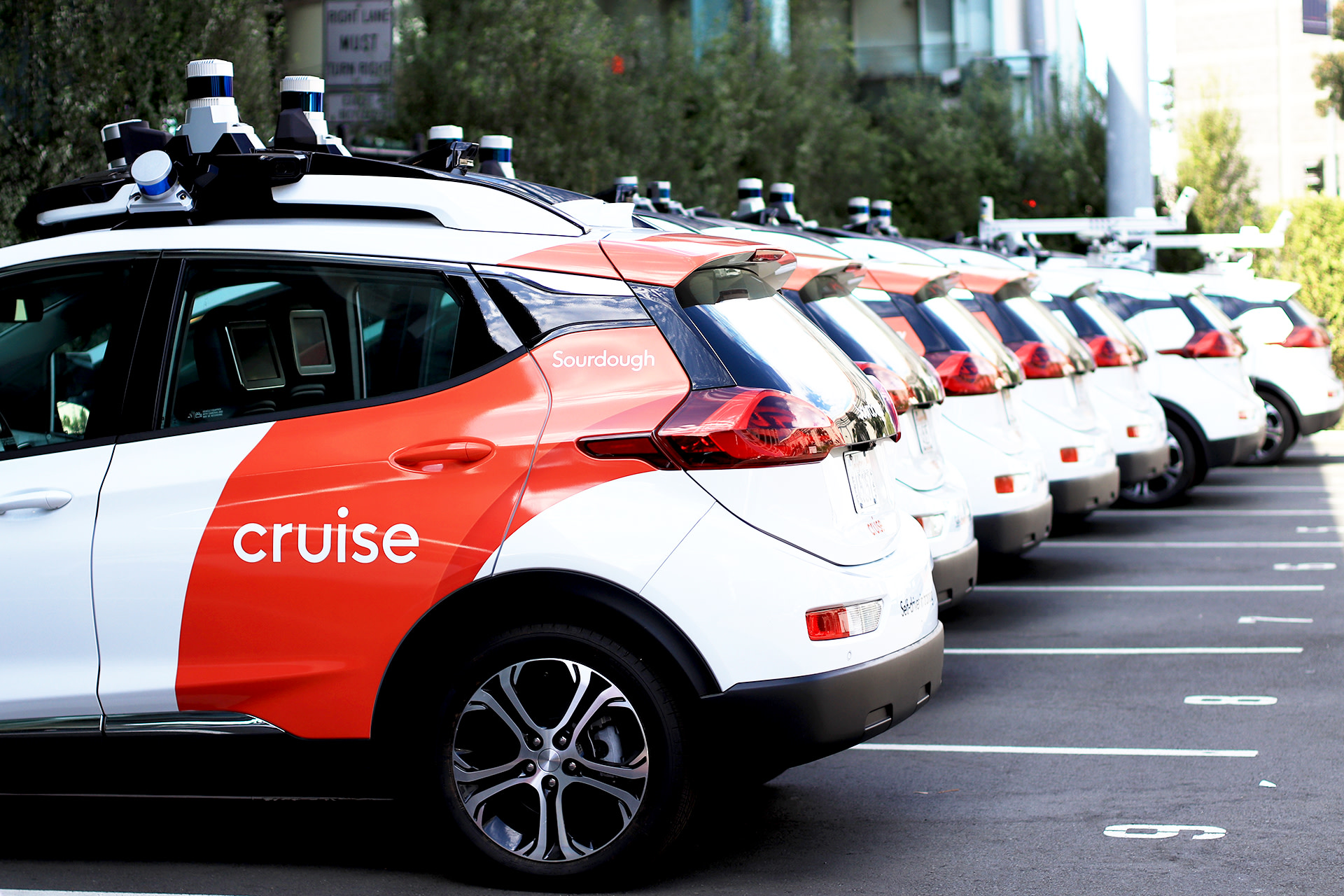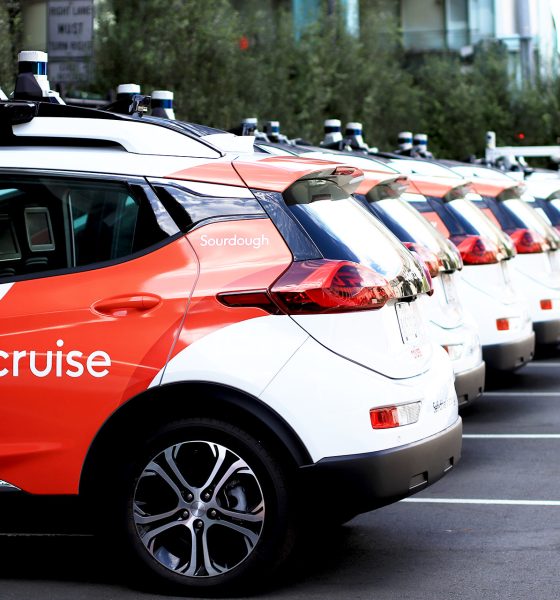Recently, reports emerged stating that General Motors’ self-driving unit, Cruise LLC, was dismissing nine top executives amid an ongoing probe. A memo from Cruise President Mo Elshenawy, which was shared by the self-driving unit online, shows that the nine executives were but the tip of the iceberg in the company’s efforts to strategize its operations.
Cruise has had a very eventful year. In August, Cruise received approval to deploy its self-driving robotaxis 24/7 in San Francisco. Following an incident when one of the company’s self-driving robotaxis crashed into a firetruck, however, the California Department of Motor Vehicles (DMV) advised Cruise to cut its fleet in the city by 50%.
Things took a turn for the worse in October when a pedestrian, a woman, was initially struck by a human-driven car. The impact was so notable that the woman was thrown into the path of a Cruise robotaxi, which ended up running over the pedestrian. The Cruise robotaxi detected a collision and proceeded to pull over, dragging the woman about 20 feet further. The pedestrian was taken to SF General Hospital with serious injuries.
By late October, the California DMV advised Cruise to halt all its operations in San Francisco. Since then, Cruise has implemented a number of changes. Leaders such as former Chief Executive Officer (CEO) Kyle Vogt and Chief Product Officer Daniel Kan also left the company.
In his memo, Cruise President Mo Elshenawy noted that the company has now updated its operating plans. These updates include a workforce reduction that affects about 24% of the company’s staff. Bloomberg News estimated that Cruise’s workforce reduction efforts would likely affect about 900 full-time workers. Most of the ones affected will be from operations, though some technology positions will also be affected. Engineers, however, will mostly be safe.
Following is Elshenawy’s memo to Cruise staff, as shared by the GM self-driving unit in its official blog. The document covers the company’s decision behind its workforce reduction, as well as what those affected by the update could expect in the coming months.
In October, Cruise paused operations to take time to examine our processes, systems and tools and improve how we operate. While we remain committed to commercialization, we will approach it within a thoughtful and achievable time frame—with safety as our north star.
As a result of our updated operating plans, today Cruise shared the difficult news that we are making staff reductions impacting 24% of full-time Cruisers. This reflects our new future and a more deliberate go-to-market path, meaning less immediate need for field, commercial operations and corporate staffing.
As we look forward, the road to successful commercialization is dependent on defining and meeting an exceptional performance and heightened safety bar. Cruise is committed to playing a key role in defining these standards with the input of our regulators, our communities and other AV industry leaders.
We are extremely grateful to the departing employees who have helped further our mission, and the remaining Cruisers who will carry that mission forward in our next chapter.
Below is a letter from Mo Elshenawy, President and CTO of Cruise, that went to all employees today:
Cruisers:
We knew this day was coming, but that does not make it any less difficult—especially for those whose jobs are affected.
Today, we are making staff reductions that will affect 24% of full-time Cruisers, through no fault of their own. We are simplifying and focusing our efforts to return with an exceptional service in one city to start with and focusing on the Bolt platform for this first step before we scale. As a result, we are reducing our employee counts in operations and other areas. These impacts are largely outside of engineering, although some Tech positions are impacted also. As you might have learned, yesterday, we took action to part ways with several SLT members.
Craig and I believe this is a necessary step, and our leadership team and the board are fully aligned with how our go-forward U.S. staffing needs will map to the priorities ahead of us, and set up Cruise for the long term. We have also ended additional assignments of contingent workers who support our driverless operations, as we refined our go forward plans.
In a few moments, you will receive an email letting you know whether or not you are affected by this staffing reduction. If you are impacted, you will get details about what happens next in a subsequent email.
Please know that our first priority is to treat departing Cruisers with fairness, and I will describe more about how we are doing that below.
I also want to explain why we are making these reductions, and what this means for Cruise moving forward.
Cruise today vs Cruise moving forward
As we’ve shared, our goal is to focus our work on a fully driverless L4 service that meets a new AV performance bar, prioritize the Bolt platform, relaunch ridehail in one city to start, and enhance our safety standards and processes before we scale. We are ceasing work on the Origin MY24 but not losing sight of our work on future programs. This is very different from our prior plans to expand into more than a dozen new cities in 2024.
As a result of our decision to slow down commercialization, we are restructuring to focus on delivering the improvements to our tech and vehicle performance that will build trust in our AVs.
Many of you will be impacted because we aren’t commercializing as quickly, and therefore don’t need support in certain cities or facilities. In other cases, we restructured teams based on the work we’re prioritizing. We didn’t take any of these decisions lightly, though I know that isn’t much of a consolation if you’re someone affected by the actions we are taking today.
How we’re helping departing employees
We know there’s no “good” way to lay off employees, but treating people fairly on their way out was a key principle that guided our approach, and our top priority was determining how we could provide a strong severance package, while treating departing Cruisers with respect. In short, we are offering departing Cruisers pay, at minimum, through April 8, 2024 (approximately 16 weeks), plus continued subsidized health benefits, RSU vesting, the January 5 bonus, and additional immigration support for those holding work visas.
Severance details include:
- Severance pay: Departing employees will remain on payroll through Feb. 12 and are eligible for an additional 8 weeks of pay, with long-term employees offered an additional 2 weeks’ pay per every year at Cruise over 3 years.
- Bonus: All impacted employees will receive their 2023 bonus (eligible target payout) on Jan. 5, 2024.
- Medical, Dental, Vision: we will provide Cruisers and their dependents who are currently enrolled in Cruise benefits the option to receive Cruise-subsidized medical, dental and mental health/EAP benefits through the end of May.
- Perks Wallet: We will give Cruisers two months to access the perks most important to them via our Perks Wallet.
- 401(k): We will give Cruisers two months to continue contributions into their 401(k) plan, including our employer match.
- RSU vesting: All Cruisers, including those impacted and those remaining, will receive their January 15th RSU vest. In addition, we will provide liquidity for all of these January 15th shares in Q1 based on an updated 409A fair market valuation that we will conduct in the first quarter. Tax obligations for these January 15th vested shares will not be incurred until we provide you liquidity for these shares.
- Career support: Departing employees will receive a year-long subscription to LinkedIn Premium, and we will create an opt-in alumni directory to connect potential employers with impacted Cruisers. Cruise Talent Acquisition will also run workshops on resume building, networking, and interview prep with departed Cruisers in the new year.
- Immigration support: We are offering continued time on payroll through March 24 in lieu of a lump-sum severance payment to allow visa holders additional time to help transition and manage their immigration status. Eligibility for the Perks Wallet and 401(k) contributions and match will also continue through this time. We also have dedicated support lined up to help Cruisers based on their needs.
Our message to other employers in the market is that each departing Cruiser is a talented, driven, and mission-focused team member who will contribute and achieve great things elsewhere. They are departing us through no fault of their own. Other companies will be privileged to have these professionals on their teams, as we were privileged to have them here during their time at Cruise.
What’s next
As mentioned, in a few moments, you will receive an email letting you know whether or not you are affected by this staffing reduction, and if you are impacted, you will get details about what happens next. I am so sorry we have to do this by email, as I would prefer that we have a conversation with each of you. Unfortunately, given the scale of this change, this approach allows us to communicate to those who are impacted at the same time. We know you will want to say goodbye to your colleagues, so you will have access to Cruise email and Zoom for the next couple of hours (until 10am PT).
This is one of the hardest days we’ve had so far because so many talented people are leaving. I’m thankful we had the chance to work together, and I know I speak on behalf of so many Cruisers who will be reaching out to those departing to help with our professional networks and references. On behalf of the SLT, the Cruise Board and GM, I’m truly grateful to everyone who has played a role in building Cruise and who has poured so much into the promise of making our roads safer and our world better.
Mo
Don’t hesitate to contact us with news tips. Just send a message to simon@teslarati.com to give us a heads up.

Investor's Corner
Tesla stock closes at all-time high on heels of Robotaxi progress
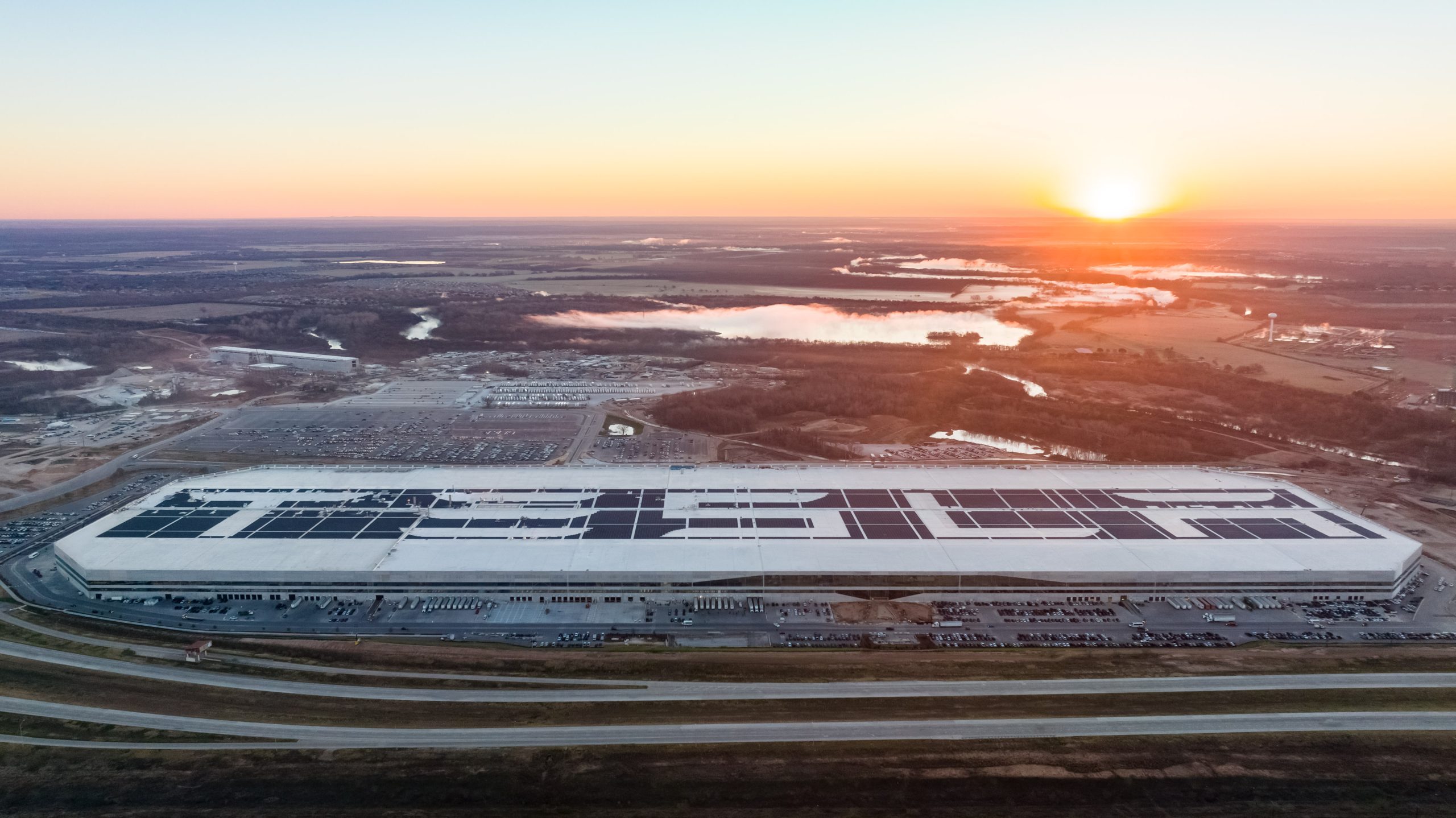
Tesla stock (NASDAQ: TSLA) closed at an all-time high on Tuesday, jumping over 3 percent during the day and finishing at $489.88.
The price beats the previous record close, which was $479.86.
Shares have had a crazy year, dipping more than 40 percent from the start of the year. The stock then started to recover once again around late April, when its price started to climb back up from the low $200 level.
This week, Tesla started to climb toward its highest levels ever, as it was revealed on Sunday that the company was testing driverless Robotaxis in Austin. The spike in value pushed the company’s valuation to $1.63 trillion.
Tesla Robotaxi goes driverless as Musk confirms Safety Monitor removal testing
It is the seventh-most valuable company on the market currently, trailing Nvidia, Apple, Alphabet (Google), Microsoft, Amazon, and Meta.
Shares closed up $14.57 today, up over 3 percent.
The stock has gone through a lot this year, as previously mentioned. Shares tumbled in Q1 due to CEO Elon Musk’s involvement with the Department of Government Efficiency (DOGE), which pulled his attention away from his companies and left a major overhang on their valuations.
However, things started to rebound halfway through the year, and as the government started to phase out the $7,500 tax credit, demand spiked as consumers tried to take advantage of it.
Q3 deliveries were the highest in company history, and Tesla responded to the loss of the tax credit with the launch of the Model 3 and Model Y Standard.
Additionally, analysts have announced high expectations this week for the company on Wall Street as Robotaxi continues to be the focus. With autonomy within Tesla’s sights, things are moving in the direction of Robotaxi being a major catalyst for growth on the Street in the coming year.
Elon Musk
Tesla needs to come through on this one Robotaxi metric, analyst says
“We think the key focus from here will be how fast Tesla can scale driverless operations (including if Tesla’s approach to software/hardware allows it to scale significantly faster than competitors, as the company has argued), and on profitability.”
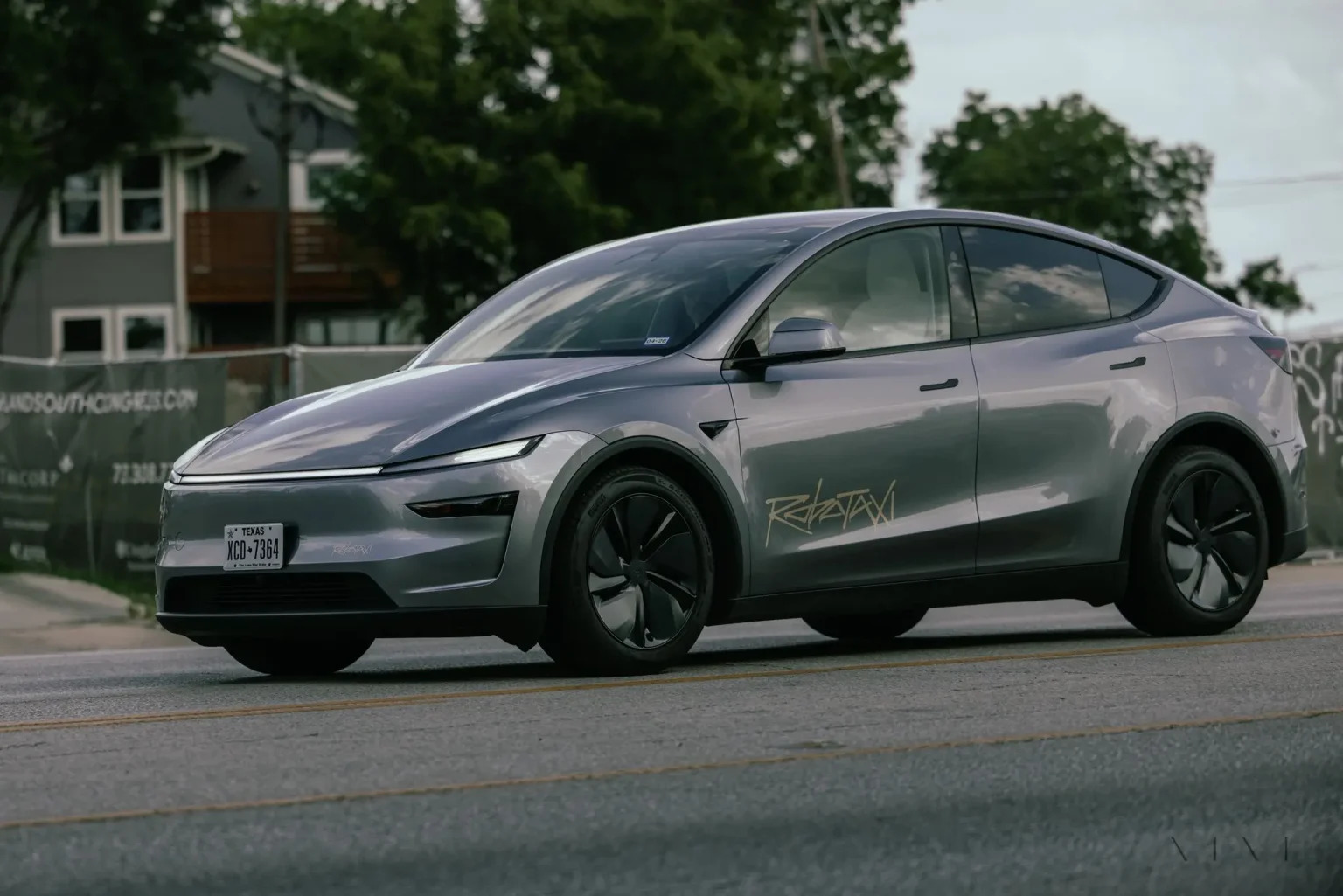
Tesla needs to come through on this one Robotaxi metric, Mark Delaney of Goldman Sachs says.
Tesla is in the process of rolling out its Robotaxi platform to areas outside of Austin and the California Bay Area. It has plans to launch in five additional cities, including Houston, Dallas, Miami, Las Vegas, and Phoenix.
However, the company’s expansion is not what the focus needs to be, according to Delaney. It’s the speed of deployment.
The analyst said:
“We think the key focus from here will be how fast Tesla can scale driverless operations (including if Tesla’s approach to software/hardware allows it to scale significantly faster than competitors, as the company has argued), and on profitability.”
Profitability will come as the Robotaxi fleet expands. Making that money will be dependent on when Tesla can initiate rides in more areas, giving more customers access to the program.
There are some additional things that the company needs to make happen ahead of the major Robotaxi expansion, one of those things is launching driverless rides in Austin, the first city in which it launched the program.
This week, Tesla started testing driverless Robotaxi rides in Austin, as two different Model Y units were spotted with no occupants, a huge step in the company’s plans for the ride-sharing platform.
Tesla Robotaxi goes driverless as Musk confirms Safety Monitor removal testing
CEO Elon Musk has been hoping to remove Safety Monitors from Robotaxis in Austin for several months, first mentioning the plan to have them out by the end of 2025 in September. He confirmed on Sunday that Tesla had officially removed vehicle occupants and started testing truly unsupervised rides.
Although Safety Monitors in Austin have been sitting in the passenger’s seat, they have still had the ability to override things in case of an emergency. After all, the ultimate goal was safety and avoiding any accidents or injuries.
Goldman Sachs reiterated its ‘Neutral’ rating and its $400 price target. Delaney said, “Tesla is making progress with its autonomous technology,” and recent developments make it evident that this is true.
Investor's Corner
Tesla gets bold Robotaxi prediction from Wall Street firm
Last week, Andrew Percoco took over Tesla analysis for Morgan Stanley from Adam Jonas, who covered the stock for years. Percoco seems to be less optimistic and bullish on Tesla shares, while still being fair and balanced in his analysis.
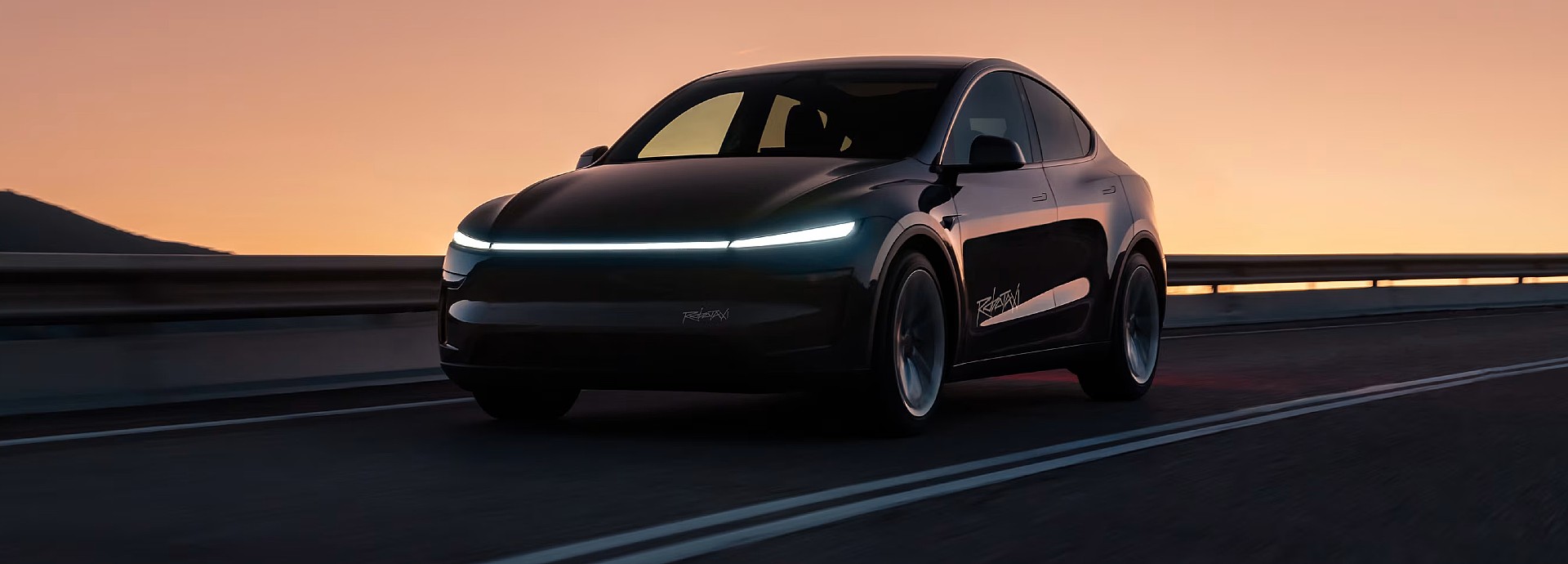
Tesla (NASDAQ: TSLA) received a bold Robotaxi prediction from Morgan Stanley, which anticipates a dramatic increase in the size of the company’s autonomous ride-hailing suite in the coming years.
Last week, Andrew Percoco took over Tesla analysis for Morgan Stanley from Adam Jonas, who covered the stock for years. Percoco seems to be less optimistic and bullish on Tesla shares, while still being fair and balanced in his analysis.
Percoco dug into the Robotaxi fleet and its expansion in the coming years in his latest note, released on Tuesday. The firm expects Tesla to increase the Robotaxi fleet size to 1,000 vehicles in 2026. However, that’s small-scale compared to what they expect from Tesla in a decade.
Tesla expands Robotaxi app access once again, this time on a global scale
By 2035, Morgan Stanley believes there will be one million Robotaxis on the road across multiple cities, a major jump and a considerable fleet size. We assume this means the fleet of vehicles Tesla will operate internally, and not including passenger-owned vehicles that could be added through software updates.
He also listed three specific catalysts that investors should pay attention to, as these will represent the company being on track to achieve its Robotaxi dreams:
- Opening Robotaxi to the public without a Safety Monitor. Timing is unclear, but it appears that Tesla is getting closer by the day.
- Improvement in safety metrics without the Safety Monitor. Tesla’s ability to improve its safety metrics as it scales miles driven without the Safety Monitor is imperative as it looks to scale in new states and cities in 2026.
- Cybercab start of production, targeted for April 2026. Tesla’s Cybercab is a purpose-built vehicle (no steering wheel or pedals, only two seats) that is expected to be produced through its state-of-the-art unboxed manufacturing process, offering further cost reductions and thus accelerating adoption over time.
Robotaxi stands to be one of Tesla’s most significant revenue contributors, especially as the company plans to continue expanding its ride-hailing service across the world in the coming years.
Its current deployment strategy is controlled and conservative to avoid any drastic and potentially program-ruining incidents.
So far, the program, which is active in Austin and the California Bay Area, has been widely successful.
